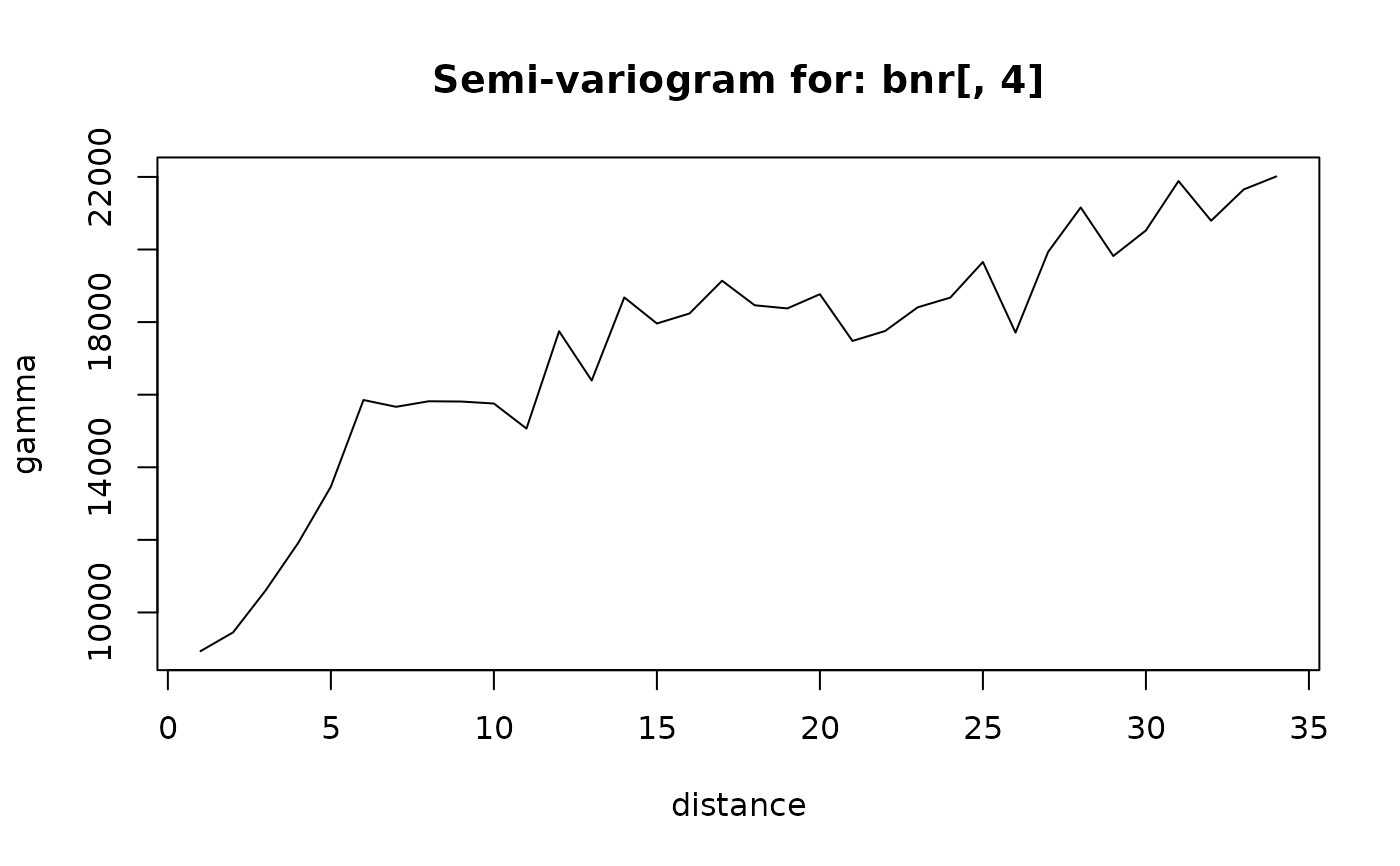
Compute and plot a semi-variogram
vario.RdCompute a classical semi-variogram for a single regular time series
vario(x, max.dist=length(x)/3, plotit=TRUE, vario.data=NULL)Arguments
- x
a vector or an univariate time series
- max.dist
the maximum distance to calculate. By default, it is the third of the number of observations
- plotit
If
plotit=TRUEthen the graph of the semi-variogram is plotted- vario.data
data coming from a previous call to
vario(). Call the function again with these data to plot the corresponding graph
Value
A data frame containing distance and semi-variogram values
References
David, M., 1977. Developments in geomathematics. Tome 2: Geostatistical or reserve estimation. Elsevier Scientific, Amsterdam. 364 pp.
Delhomme, J.P., 1978. Applications de la théorie des variables régionalisées dans les sciences de l'eau. Bull. BRGM, section 3 n°4:341-375.
Matheron, G., 1971. La théorie des variables régionalisées et ses applications. Cahiers du Centre de Morphologie Mathématique de Fontainebleau. Fasc. 5 ENSMP, Paris. 212 pp.
See also
Examples
data(bnr)
vario(bnr[, 4])
 #> distance semivario
#> 1 1 8933.284
#> 2 2 9450.129
#> 3 3 10609.430
#> 4 4 11919.288
#> 5 5 13466.546
#> 6 6 15853.098
#> 7 7 15666.052
#> 8 8 15818.568
#> 9 9 15811.266
#> 10 10 15756.645
#> 11 11 15066.837
#> 12 12 17747.786
#> 13 13 16389.750
#> 14 14 18679.669
#> 15 15 17961.426
#> 16 16 18236.943
#> 17 17 19139.413
#> 18 18 18463.482
#> 19 19 18376.732
#> 20 20 18767.747
#> 21 21 17480.317
#> 22 22 17754.858
#> 23 23 18407.075
#> 24 24 18675.184
#> 25 25 19656.635
#> 26 26 17710.909
#> 27 27 19933.375
#> 28 28 21158.673
#> 29 29 19820.446
#> 30 30 20525.432
#> 31 31 21885.569
#> 32 32 20792.761
#> 33 33 21654.493
#> 34 34 22013.464
#> distance semivario
#> 1 1 8933.284
#> 2 2 9450.129
#> 3 3 10609.430
#> 4 4 11919.288
#> 5 5 13466.546
#> 6 6 15853.098
#> 7 7 15666.052
#> 8 8 15818.568
#> 9 9 15811.266
#> 10 10 15756.645
#> 11 11 15066.837
#> 12 12 17747.786
#> 13 13 16389.750
#> 14 14 18679.669
#> 15 15 17961.426
#> 16 16 18236.943
#> 17 17 19139.413
#> 18 18 18463.482
#> 19 19 18376.732
#> 20 20 18767.747
#> 21 21 17480.317
#> 22 22 17754.858
#> 23 23 18407.075
#> 24 24 18675.184
#> 25 25 19656.635
#> 26 26 17710.909
#> 27 27 19933.375
#> 28 28 21158.673
#> 29 29 19820.446
#> 30 30 20525.432
#> 31 31 21885.569
#> 32 32 20792.761
#> 33 33 21654.493
#> 34 34 22013.464
